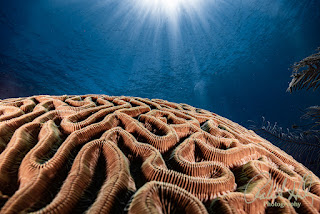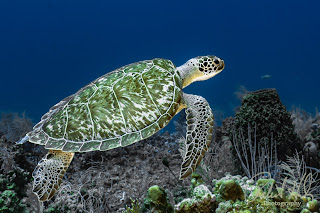The Magic of AI-Powered Subject Detection in Underwater Photography
New Masking Features in Lightroom That Help Your Marine Subjects Shine
For decades, isolating subjects in underwater photography was a labor-intensive process that demanded meticulous brushwork, manual luminance masks, and abundant patience. Photographers had to invest significant time and effort to achieve the desired results, often resulting in frustration and lengthy editing sessions. However, this once cumbersome task has been revolutionized with the advent of Lightroom Classic. The introduction of advanced AI-powered masking tools has transformed the workflow, empowering photographers to effortlessly select divers, marine life, backgrounds, and entire reef scenes with just a single click. This innovative technology saves time and enhances the creative possibilities, allowing users to focus on their artistic vision rather than the technical challenges of editing underwater images.
In the latest versions of Lightroom Classic (13.2 and
newer), Adobe has expanded these capabilities to include two powerful new
options:
- Select
Landscape
- Select
Sky (now surprisingly accurate for underwater backgrounds)
If you're an underwater photographer looking to streamline
your editing workflow and highlight your subjects precisely, these tools
will feel like pure magic.
What Is AI-Powered Masking in Lightroom?
AI masking in Lightroom uses Adobe Sensei technology to analyze
your image and automatically select key areas, such as:
- Subject
- Background
- People
- Sky
- Objects
- Landscape
(new in 2025)
Each option creates a separate, editable mask layer,
allowing you to apply precise adjustments exactly where needed, without
affecting the rest of your photo.
Accessing the Masking Tools
Step-by-Step:
- Open
your underwater image in the Develop Module (D)
- Press Shift
+ W or click the Masking icon (top-right panel)
- Choose
“Create New Mask”
- Select
from:
- Select
Subject
- Select
Background
- Select
Sky (great for water!)
- Select
Object
- Select
People
- Select
Landscape
From there, Lightroom will analyze your image and generate
an editable mask. A red overlay (Color selection by User) shows what’s been selected.
6 Real-World Examples Using the New AI Options Underwater
1. Select Subject: Isolate a Sea Turtle in Motion
Lightroom's Select Subject does a stellar job when your subject is well-defined, like a swimming turtle.
Steps:
- Use Select
Subject
- Boost Exposure,
Contrast, and Texture
- Invert
the mask to subtly reduce Clarity in the background
Why it works: The contrast between the turtle and the
blue water helps Lightroom zero in.
2. Select Sky: Target Background Water for Color Balance
You’d think "Select Sky" has no place
underwater - yet it works incredibly well for identifying wide open water
areas.
Use Case: Blue water behind a diver or a ray.
Steps:
- Use Select
Sky
- Adjust
Color Temperature slightly toward teal or cool blue
- Reduce
Dehaze to soften the background
- Optional:
Lower Saturation for a more natural open-water look
Pro Tip: Use the Invert option to adjust only
the subject after creating the sky mask.
3. Select Landscape: Perfect for Reef Scenes and Coral
Beds
The new Select Landscape tool is adept
at identifying reef structures, sand, and foreground terrain.
Example: Wide-angle coral reef shots, where the reef
fills the lower half of the frame.
Steps:
- Select
Landscape
- Boost Texture,
Clarity, and Shadows
- Add
subtle Vibrance to enhance coral without affecting the diver or
fish
Why this matters: It’s an easier alternative to
brush-based selections for reef detail enhancement.
4. Combining Select Subject + Select Sky for Layered
Edits
Let’s say you have a freediver against a vast blue
background.
Workflow:
- Use Select
Subject to isolate the diver
- Make
exposure and clarity adjustments
- Create
a new mask using Select Sky to adjust the water background
- Apply Color
Grading and adjust the Hue to enhance the water mood
Keyboard Shortcuts:
- Shift
+ W to open Mask Panel
- K to
fine-tune with the brush tool
- O to
toggle mask overlay on/off
5. Fixing Backscatter with Inverted Landscape/Sky
Selections
Backscatter is primarily visible in open water, not on the
subject or reef.
Steps:
- Use Select
Sky or Select Landscape
- Invert
the mask
- Apply
Negative Texture, Negative Clarity
- Spot-heal
with the Healing Tool (Q) if needed
Bonus: If using AI Denoise (Detail Panel), combine
with a mask for even cleaner results.
6. Color-Correcting Green or Murky Water
The background might be greenish or brown in freshwater or silt-heavy dive sites.
Steps:
- Use Select
Sky or Select Landscape (whichever targets the murk best)
- Lower the Temperature to cool the tone
- Add Blue
Primary in the Calibration panel
- Adjust
Tint and Vibrance accordingly
Why this works: Sky and Landscape masks excel at
selecting vast, textureless areas, just like murky backgrounds.
Pro Tips for Using AI Masks Underwater
- Rename
Your Masks: Keep organized by right-clicking mask titles (e.g., “Diver
Pop,” “Reef Boost”).
- Stack
Masks: Don’t settle for one—create multiple layers for more nuanced
edits.
- Use
“Add” & “Subtract” tools to refine: These tools give you precision
control when AI makes minor errors.
- Check
Edge Feathering: Underwater subjects often have soft edges. Adjust
mask feathering for a more natural blend.
A Note About Performance
AI masks require a powerful CPU/GPU combo to process
quickly. If you notice lag, pre-rendering your 1:1 previews and closing
background apps can speed things up.
Final Thoughts: Smart Selections, Stunning Results
Adobe’s innovative AI-powered features, including Subject, Sky, and Landscape selections, have significantly transformed the landscape of underwater photo editing, making the process faster, more precise, enjoyable, and creative. Whether you aim to isolate a stunning nudibranch, enhance the intricate details of a vibrant reef, or achieve a perfect balance of blue tones in your underwater imagery, these advanced tools empower you to edit your photos like a professional, without the tediousness of traditional masking techniques.
So, the next time you return from an exhilarating dive trip with a memory card full of breathtaking images, don't hesitate to explore and experiment with these cutting-edge AI tools. You’ll save valuable time that would otherwise be spent on meticulous adjustments and unleash your creativity, allowing you to focus on bringing your underwater adventures to life through stunning visual storytelling.
📌 Resources
- 🧠
See more Lightroom AI tutorials
on this blog
- 🧠 Get weekly notifications when the new blog posting is published.
- 📥
Want personalized help? Contact me about my Lightroom Training Program
- 🧭 Get my free download: "Free Before and After Gallery #1," - Discover The Exact Steps To Create Stunning Images!
Written by Robert Herb – Empowering underwater photographers to capture and enhance the beauty of our oceans.
Stay tuned for more in-depth insights into underwater photography. Let’s dive deeper into the art and craft of capturing the marine world! If you have any comments or suggestions, I’d love to hear them.
Get ready for an exciting underwater photography adventure! For more details on my upcoming online training course, check out my "Training" tab at RobertHerb.com or email me at bob@robertherb.com.
Sincerely,
Bob Herb
|
|





Comments
Post a Comment
Please let me know your comments.